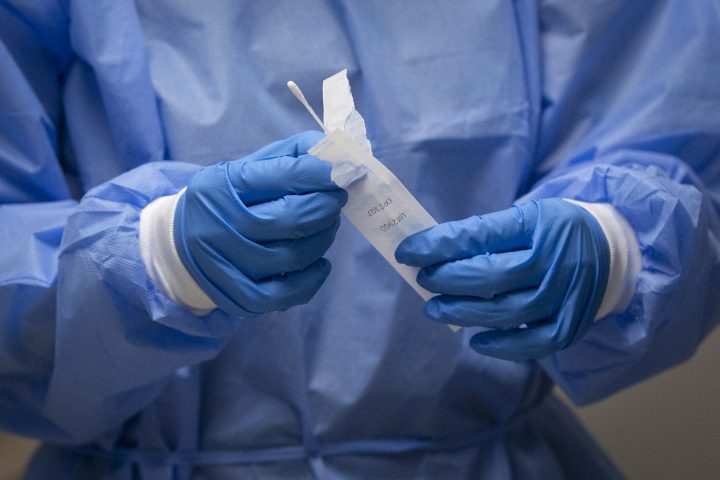Researchers from Western University and the Lawson Health Research Institute have found issues with how COVID-19 testing is completed in Canada.

They say their research suggests most instructions for conducting nasal swabs have been incorrect.
The team, which is led by Dr. Leigh Sowerby from Western and Lawson, found that there are wide discrepancies in how the tests are completed, specifically how deep they are inserted into a person’s nose.
“They just don’t go deep enough into the nasal cavity,” said Sowerby, who is an expert in the anatomy of the head, neck and inside of the nose.
He says the results from the study caught him off guard.
“As a surgeon who works inside the nose all the time, I was surprised to find that most of the instructions in Canada aren’t effective to reach the nasopharynx.”

Get weekly health news
Sowerby says less than a quarter of public health instructions tell practitioners to insert the swab deep enough to reach the nasopharynx, which is the top of a person’s throat, behind their nose.
Sowerby, along with Dr. Breanna Chen, made a video to demonstrate how far a swab should be inserted into the nose for the test to be effective.
“If we are doing what we are calling a nasopharyngeal swab, the technique for that should be standardized; there is no reason why there should be so much variability,” Sowerby said.
The full findings of their study were published in the Journal of Otolaryngology – Head & Neck Surgery.
Six provinces, including Ontario, recommended that the swab be inserted to a depth of 4 cm. Sowerby says this depth only reaches the mid-nasal cavity, not the nasopharynx. The Northwest Territories, Nunavut, Saskatchewan, Prince Edward Island and Alberta, also recommended 4 cm.
British Columbia and Manitoba recommended 7 cm, which Sowerby stresses is still not enough.
“If we want the most accurate test results, there is room for improvement in the test instructions,” Sowerby said.
Newfoundland, Nova Scotia, New Brunswick, and Yukon were the only provinces and lone territory to suggest a far enough distance.












Comments